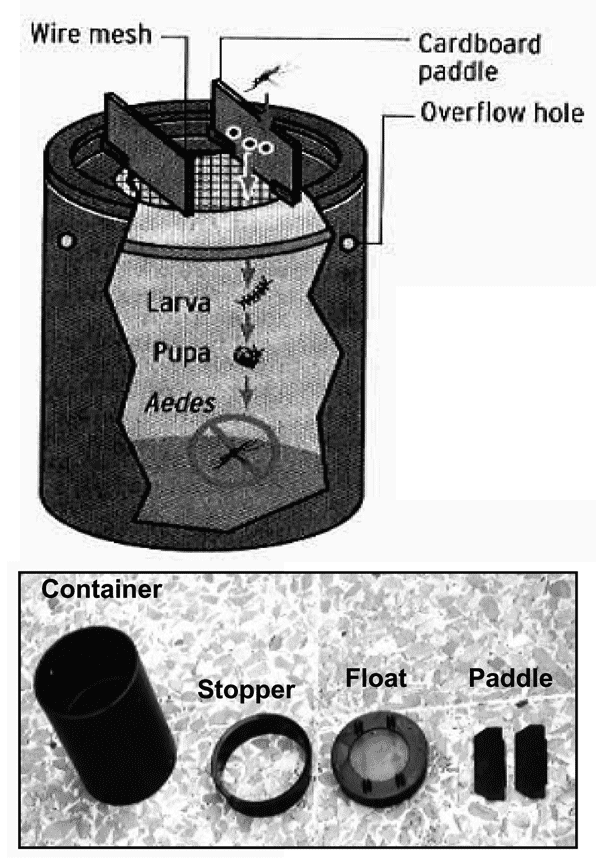Volume 12, Number 6—June 2006
Synopsis
Dengue Prevention and 35 Years of Vector Control in Singapore
Figure 3

Figure 3. Diagrammatic representation of an autocidal ovitrap made up of a black cylinder, a wire mesh on a flotation device, and 2 pieces of cardboard. The gravid female Aedes mosquito lays its eggs on the cardboard. The larvae that hatch from the eggs go through the immature stages of the mosquito's lifecycle, but the resultant adult mosquito will be trapped underneath the wire mesh and drown. Picture inset shows the different components of the ovitrap.
Page created: January 04, 2012
Page updated: January 04, 2012
Page reviewed: January 04, 2012
The conclusions, findings, and opinions expressed by authors contributing to this journal do not necessarily reflect the official position of the U.S. Department of Health and Human Services, the Public Health Service, the Centers for Disease Control and Prevention, or the authors' affiliated institutions. Use of trade names is for identification only and does not imply endorsement by any of the groups named above.